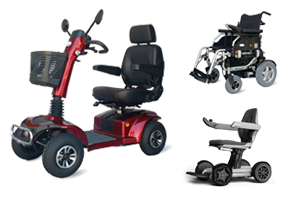You'll Never Guess This Adult Adhd Assessments's Tricks
페이지 정보

본문
 Assessing the Risk for ADHD in Adults
Assessing the Risk for ADHD in AdultsIf you are seeking a method to assess the risk for ADHD in adults, you have come to the right place. This article provides a reference to some of the most frequently used tests used for this purpose. It also discusses the biological markers of ADHD and the effect of feedback on the evaluations.
CAARS-L S
The CAARS-S: L or Conners' Adult adhd assessments ADHD Rating Scale-Self Report: Long Version is a measure of self-report that assesses the impact of ADHD in adults. It is a multi-informant test that can identify the signs and symptoms in the areas that are clinically significant, such as restlessness, impulsivity, and hyperactivity. In addition to self-report and observer scores it also provides a validity index which is the Exaggeration Index.
This study examined the performance and efficiency of the CAARS S: L in both paper and online administration formats. We observed no differences in the psychometric properties of the clinical constructs between these two formats. However, we did notice some differences in the elevations produced by participants. Specifically, we found that participants in the FGN group produced significantly higher scores on Impulsivity/Emotional Lability scale than the ADHD group, but that the elevations were similar on all of the other clinical scales.
This is the first study that evaluates the performance of the CII in an online format. This index was able detect fakery regardless of its format.
Although they are not conclusive, these findings suggest that the CII will be able to demonstrate sufficient specificity even when administered online. However, care should be exercised when interpreting small sample sizes of the non-credible group.
The CAARS-S: L is a reliable tool to assess ADHD symptoms in adults. It is vulnerable to feigning it, however, because of the absence of a fake validity scale. Participants could be able to report more serious impairments than they are due to the way they interpret their responses.
While CAARS: S: L performs well however, it can be susceptible to feigning. Therefore, it is recommended to be cautious when administering it.
Tests of attention for adolescents and adults (TAP)
Recent years have seen the study of the tests of attention for adults and adolescents (TAP). There are many ways to cognitive training, meditation, or physical exercise. It is important to remember that they all are designed to be part of a larger intervention program. They all aim to increase the duration of attention. They may prove to be effective or not depending on the population of the study and the design.
A variety of studies have attempted to answer the question: What is the best method of training for sustained attention? A systematic review examining the most efficient and effective solutions to the problem is available. Although it's not going give definitive answers, this review gives an overview of the present state of the art in this field. Among other findings, it shows that a small sample size is not necessarily a bad thing. While many studies were too small to be analyzed in a meaningful way, this review does include a few notable studies.
Identifying the most effective sustained attention training intervention is a difficult task. There are many factors to consider, including the age and socioeconomic status of participants. Also, the frequency at the manner in which interventions are carried out will also differ. Therefore, it is important to conduct a prospective registration prior to the analysis of data. Finally, follow-up steps are necessary to determine how long-term the effects of the intervention.
To evaluate the most effective and efficient sustained training for attention an extensive review was conducted. To determine the most effective, relevant and cost-effective programs, researchers culled through nearly 5000 references. The database compiled more than 650 studies, and more than 25000 interventions. The review incorporated quantitative and qualitative methods to provide a wide range of useful insights.
Evaluations: The effects of feedback
Based on subjective accounts of cognitive functions and objective neuropsychological tests the current study assessed the effects of feedback on evaluations for adult adhd assessments ADHD assessment. When compared to control subjects they showed difficulties in self-awareness of attentional and memory processes.
The study couldn't find any common metric between these two measures. The study also failed to show any differences between ADHD and controls on tests for executive function.
The study did reveal some notable instances of exceptions. Patients had a higher rate of errors in vigilance tasks and slower reaction times to selective attention tasks. The patients showed less effects than control group.
The Groningen Effort Test was used to assess noncredible cognitive performance for adults with adhd diagnostic assessment for adults. Participants were required to respond quickly to simple stimuli. The quarter-hour error rate was calculated by adding the time required to respond to each stimulus. Bonferroni's correction was utilized to reduce the number of errors in order to account for the effects that were not present.
Additionally a postdiction discrepancy test was utilized to measure metacognition. This was perhaps the most interesting aspect of the study. This approach, unlike other research that focused on cognitive functioning in a laboratory setting lets participants compare their performance against a benchmark outside of their own domain.
The Conners Infrequency Index is an index that is embedded in the long version of the CAARS. It is a way to identify the most subtle symptoms of ADHD. A score of 21 indicates that a patient isn't trustworthy when it comes down to the CII.
The postdiction discrepancy method was able to reveal some of the most important results of the study. Among these was an overestimation of the patient's capabilities to drive.
Not included in the study are common disorders that are comorbid
If you suspect that an adult adhd assessment near me patient has ADHD, you should be aware of the common disorder that might not be included in the diagnosis. These conditions can make it difficult to determine and treat the condition.
Substance use disorder (SUD) is the most frequently identified comorbidity disorder associated with ADHD. Individuals with adhd assessments for adults near me are twice as likely to be suffering from SUD as those without. The relationship is believed to be caused by neurobiological and behavioural characteristics.
Anxiety is another comorbidity that is common. Anxiety disorders are common in adults and vary from 50 to 60 percent. Patients suffering from ADHD comorbidity have a significantly higher risk of developing anxiety disorders.
ADHD psychiatric comorbidities are associated with a higher burden of illness and less effective treatment. These conditions require more attention.
Anxiety and personality disorders are among the most frequent co-occurring psychiatric disorders that can be attributed to ADHD. This relationship is thought to be the result of the changes in reward processing that are seen in these conditions. Patients with comorbid anxiety are more likely to be diagnosed later than those without it.
Dependency and addiction are also comorbidities of ADHD in adults. Most of the studies conducted to date have shown that there is a strong correlation between ADHD and use of drugs. ADHD patients are more likely to smoke, drink cocaine and cannabis.
ADHD adults are often viewed as having a bad quality life. They face challenges in managing time and psychosocial functioning as well as ability to organize. As a result, they are susceptible to unemployment, financial difficulties and other negative outcomes.
In addition, individuals with aADHD are more likely to engage in suicidal thoughts. Interestingly, drug treatment of AADHD is associated with a decrease in the rate of suicide.
Biological indicators of ADHD
The identification and classification of biological markers for ADHD in adults will improve our understanding and allow us to determine the effect of treatment. This study reviews the available data about potential biomarkers. We concentrated our focus on studies that investigated the significance of specific genes or proteins in predicting treatment response. We found that genetic variants could play a significant part in predicting the response to treatment. However, most genetic variants have limited effect size. These findings require further research.
One of the most exciting results was the discovery of genetic polymorphisms in snap receptor proteins. Although this is the first report of a gene-based prognostic biomarker for treatment response, it is still too to draw any conclusions.
Another promising finding involves the interaction between the default mode network (DMN) and the striatum. Although it is not specific how these factors contribute to ADHD symptoms but they could be useful in predicting the response to treatment.
By employing a RNA profiling technique We applied the method to identical twin pairs that are discordant for ADHD traits. These studies provide a complete map that reveals RNA changes that are associated with ADHD. The results of these studies were combined with other 'omic data.
GIT1 was identified as a gene associated with neurological disorders. In the twins, expression of GIT1 was increased twofold in people with ADHD. This could indicate a different type of ADHD.
 We also found IFI35, an interferon-induced protein. This protein could be used as a biochemical marker to monitor the inflammatory processes in ADHD.
We also found IFI35, an interferon-induced protein. This protein could be used as a biochemical marker to monitor the inflammatory processes in ADHD.Our findings show that DMN is attenuated when performing cognitive tasks. Furthermore, there is evidence that suggests that theta oscillations are involved in the attenuation process.
- 이전글The 10 Most Terrifying Things About Link Togel 24.09.20
- 다음글10 Pragmatic Demo-Related Projects To Stretch Your Creativity 24.09.20
댓글목록
등록된 댓글이 없습니다.





